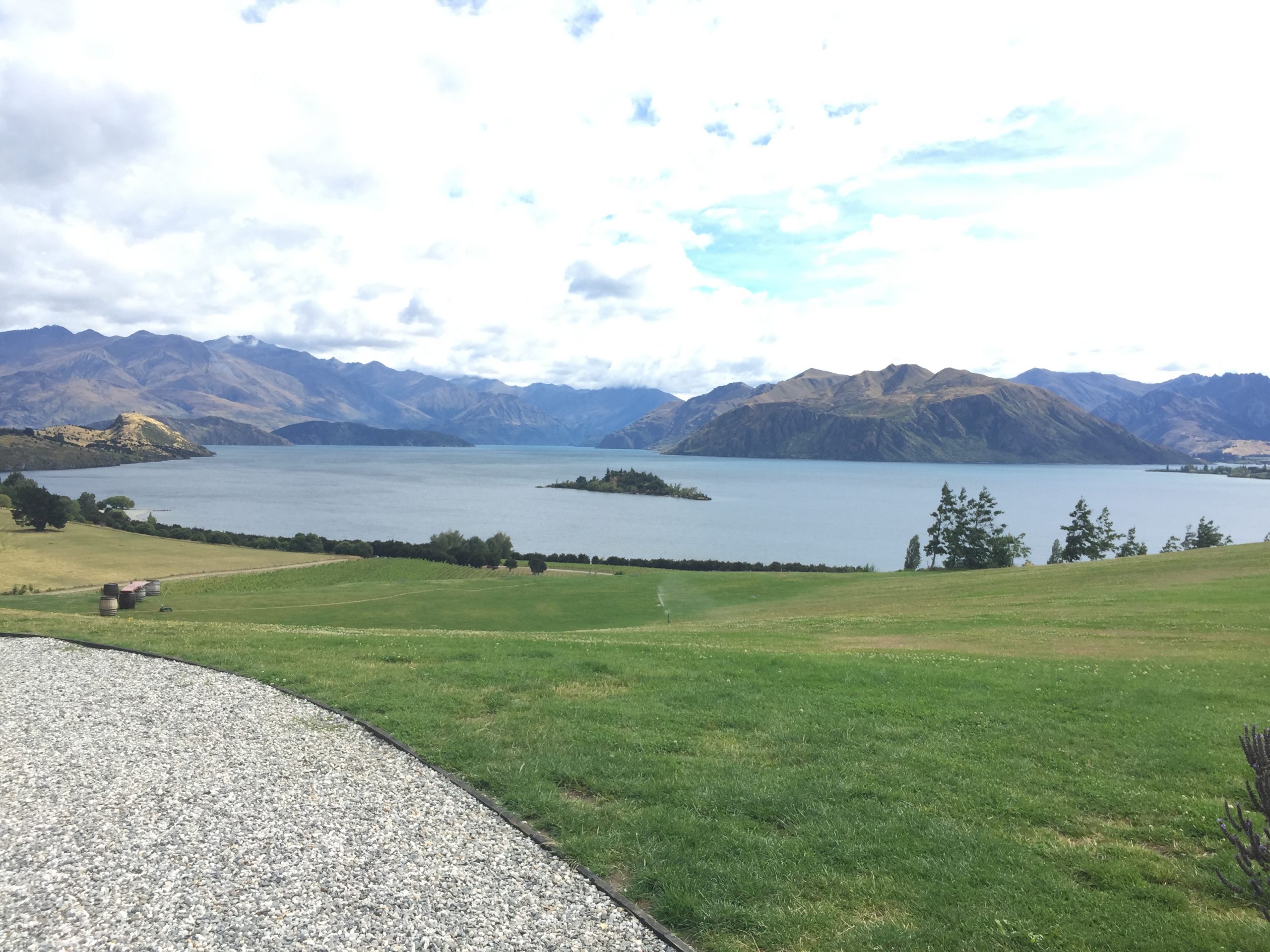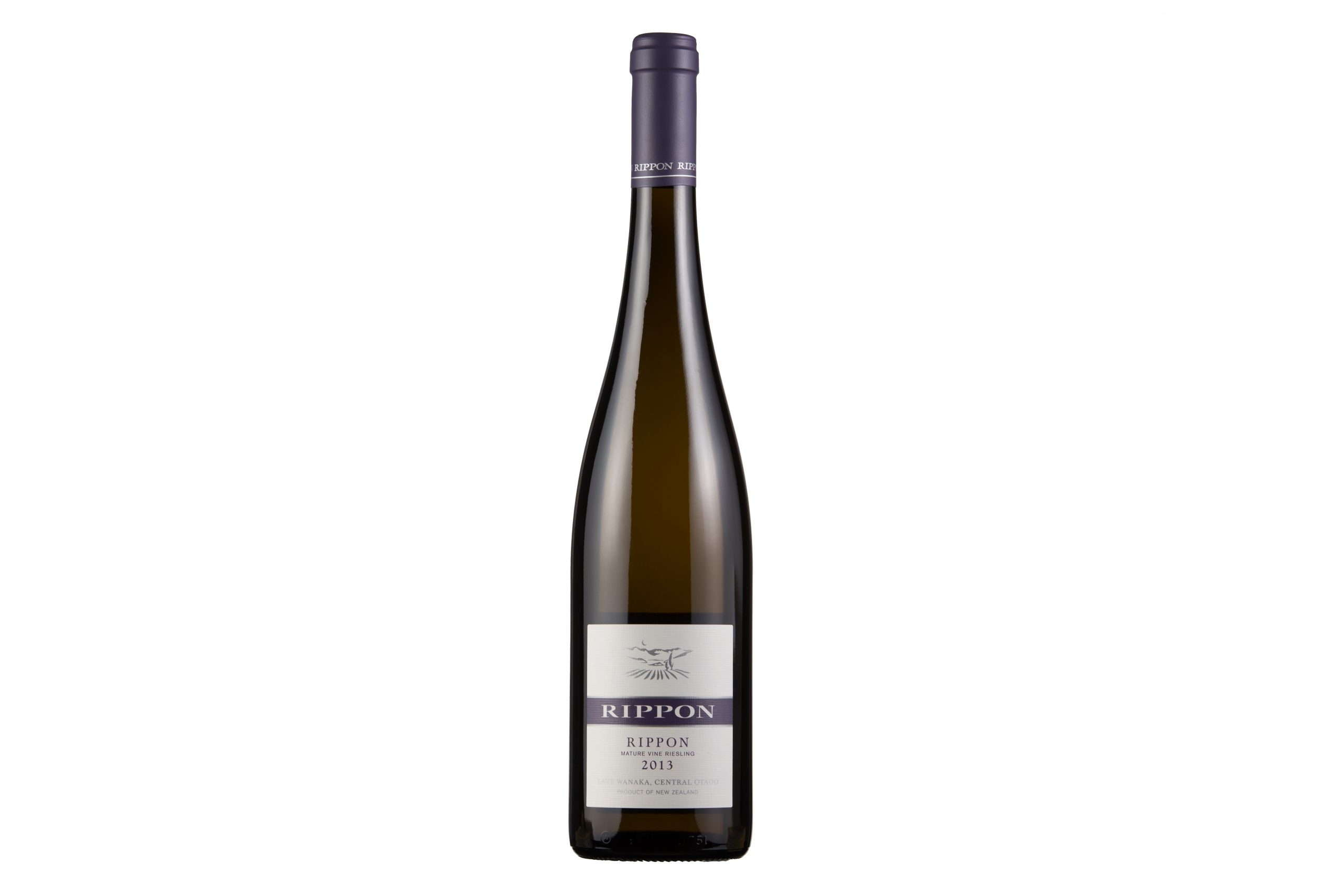Standing outside Rippon’s tasting room is a backdrop so breathtakingly it’s feels like I am about to embark on an exuberant retreat designed to nurture the mind, body and soul. Before venturing inside, like most I can’t resist first capturing the perfect shot sure to wow your Facebook friends and Instagram followers. Standing upon the hill crest gazing down the north facing escapement, Lake Wanaka’s crystal blue water is vividly framed with the rouged Southern Alps in the background and vines in the fore. This iconic landscape undoubtedly sets the tone for visitors arriving on the property.
Rippon has a unique history dating back to 1912. What is now a much smaller parcel of land, was once upon a time part of a much larger self-catering high country located a short five minute commute from the former self service town of Wanaka a stark contrast to the tourism mecca it is today.
When it comes to story of wine, it all begins with the lands third generation custodian, Rolfe Mills. During World War II, Rolfe served on submarines in the Atlantic. On his way back home to New Zealand, he visited Portugal. Here he saw first-hand the Douro’s famed south facing, schist vineyard cliff faces, and began drawing parallels to his own land’s schist bedrock soils half way around the world.
In 1975, Rolfe Mills planted the first experimental rows of vines in “Tinkers Field”. The name seemingly makes complete sense given the ‘tinkering’ over the years but it is indeed a mistaken assumption as Tinkers was actually Rolfe’s nickname. In 1982, after years of experimentation and time working in vineyards in the Dordogne, South East France, Rolfe and his wife Lois planted their first commercial block of vines. As Jo Mills explains “it was a hunch being in the Douro but he knew what he was doing” and “thank goddess they planted Riesling and Pinot Noir but really it was nothing more than good fortune as it is all they could get their hands on at the time from the North Island nurseries”.
With Rolfe’s passing a new chapter in Rippon’s history was born. In 2003, Rolfe’s son Nick Mills, took the helm and under his leadership Rippon has undoubtedly developed a reputation as one of the region’s finest wineries.
Rippon is fortuitously blessed with a gentler microclimate in a part of the world historically regarded as too cold to grow grapes. The property’s proximity to the Southern Alps main divide and Ruby Island buffers terse “roaring 40’s” weather, while Lake Wanaka hot water blanket effect provides the vines with crucial night frost protection and warmth.
Rippon has been organic since inception, but in 2002 post Nick’s time studying and working in Burgundy, Rippon took a new turn farming their vineyards biodynamically.
Biodynamic farming, a concept developed by Austrian philosopher-scientist Rudolph Steiner in the 1920’s long before the organics movement, is in essence a super charged form of organics. Like conventional organics, biodynamics forbids the use of synthetic fertilizers but it goes further adopting a more holistic and spiritual approach viewing the farm as an intertwined living system. While it’s true that Steiner’s methodology includes ‘witch craft’ preparations such as packing dung into cow horn and burying it underground in the autumn to later be transformed into a root-stimulating sprays and carrying out vineyard work in accordance to astrological and lunar movements, it’s a combination that predicates that a biodynamic farm represents a closed, sustainable, self-nourishing system of the highest quality providing everything from the land. Speaking with Jo as we stride across the property, there is no doubting their genuine passion and contagious belief in the biodynamics concept which is woven into every thread of the property’s tapestry.
The vineyard team, akin to a ‘hamlet’ of 10 people rather than a group bound together by contracts, meet each morning outside the tractor shed also known as ’The Huddle’ before dispersing across the property. There are no pre-emptive treatments. Instead they watch the land and adjust their practices accordingly which is central to biodynamic philosophy where application and treatment timings are key. The morning huddle therefore represents an important part of the daily routine not only for the team to catch up and gage one another’s mood, but also to set the stage for the day’s work ahead.
One of the crucial aspects of biodynamics is soil health and sustaining the microbe populations. Walking down the hillside behind the Rippon Hall your eyes are drawn to the plentiful amounts of Yarrow and Camomile – both of which represent key biodynamic preparations. As Jo describes central to biodynamics is “growing your ingredients” and “using from the land”. Veering off the driveway on the crest of the hill above the wines we take a pause at the “Pantry and Liver” – a fitting term for Rippon’s composting site. Here the 80 tonne of compost composed of waste material from the winery (skins, seeds, stems) and biodynamic preparations is the sole source of fertilizer used at Rippon. As Jo states “anything from the land, goes back onto the land and informs the land”. The composting site selection is unsurprising of course no accident. The location allows the compost to leech into an underground tank where it is then dispersed around the property. Jo explains that within the next five years they plan to build a new winery perched above the Pantry and Liver. This new site will maximize the forces of gravity and as the beating heart at the centre of the property the winery will naturally be more energy efficient.
Completing the biodynamic loop, the vines share the land with native tree species and bees, cows, goats and chickens, and from a cultural perspective, the Rippon Hall numerous events including tastings, weddings and book launches. In Jo’s words, this is what a true “self-sustaining farm is like; it’s like the hand of a clock bringing everything back to 12 o’clock”.
Walking back to the tasting room, glancing further up the hillside is the winery which presently is “nothing more than an old goat shed” in Jo’s words. The fruit is all handpicked and once it reaches the winery it goes onto a sorting table albeit Jo describes it more as an “assessment table” where the team gets the opportunity to see the fruit they are handling and dictates what happens thereafter in terms of the winemaking process. Each parcel is treated separately: picked separately, fermented separately and barrelled separately. Stylistically, Jo describes Rippon’s wines as “speaking to where they are from in its native context” and although they don’t produce any natural wines such as those entirely free from sulphur they do believe that you can make a “fine wine naturally” whilst maintaining the wines integrity.
With a mere 15 hectares under vine, Jo explains they have reached capacity and there will be no more planting. And whilst other properties in Central Otago are experimenting with other varieties such as Gruner Veltliner, Alberino and other Spanish Varietals, here at Rippon they are going the other way. Fifteen to twenty years ago, Rippon was home to fifteen rows comprised of thirty different varieties to see what worked well and what did not, pulling out the last vines (Chardonnay) in 2005. Today, Rippon solely focuses on proven varietals which include Riesling, Pinot Noir, Gewürztraminer and a tiny bit of Gamay, Sauvignon and Osteiner.
As we continue to stride across the property it’s self-evident that Jo is under no dissolution that the family can only “do what they do as the land was inherited” and how fortunate the family is to be blessed with a unique property with such “distinctive vine blocks” singing with their special voices which in the future they may look to bottle separately like they currently do with Tinkers Block and Emma’s Block. Jo recognizes that key to Rippon’s future and safekeeping the land for a fourth and now a fifth generation is keeping everyone involved and developing an innate attachment to the land. With the property’s enchanting magic, undoubtedly one expects there will be many more great chapters to come in the Rippon story.
Recommended Wines:
RIPPON “RIPPON” MATURE VINE PINOT NOIR 2013 Central Otago, New Zealand:
Rippon’s flagship wine. Jo describes this Pinot Noir as the “voice of the farm” blending together all the mature vine parcels (including Emma’s and Tinker’s block) of Pinot Noir to form all the pieces of “the orchestra”. The 2013 vintage compared to 2012 is a more taught and lean. Wine bustling with vibrant red fruit overlain with wonderful overtones of dark fruit and a hints of herbaciousness delivers a rich long length and spiced savoury finish from French Oak influences. Structure and fine delicacy makes it a great cellar candidate for another 5-10 years.
RIPPON “RIPPON” MATURE VINE RIESLING 2014 Central Otago, New Zealand:
This classy wine shows pleasant aromas of citrus, orange peel and hints of tropical fruit. On the palate, the wine is off dry, clean and bright demonstrating fruit forwardness with notes of lemon and peach with mineral notes feathering across the palate. Lovely, spiced finish. Perfect food friendly wine and the perfect accompaniment with our Brown and Rainbow trout caught earlier that day thanks to Davy from Adventure Wanaka.
© Monique Simpson




